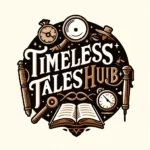The novel “White and Black Lies: Or, Truth Better Than Falsehood” by Madeline Leslie, like many of her works, likely explores moral and ethical dilemmas through engaging narratives. Here are five notable aspects of the book, based on typical characteristics of Leslie’s writing:
- Moral Lessons: As the title suggests, the novel probably emphasizes the importance of truth and integrity. Leslie’s stories often contain clear moral lessons intended to teach readers about the virtues of honesty over deception.
- Character Development: The characters in Leslie’s novels typically undergo significant personal growth. The protagonists may start with a flawed understanding or practice of honesty but evolve through various trials that test their values.
- Engaging Plot: Expect a plot that is engaging and driven by the dilemmas the characters face between choosing truth or falsehood. The narrative likely includes a series of misunderstandings, mistakes, or misfortunes that resolve when truth prevails.
- Historical Setting: Given that Madeline Leslie wrote during the 19th century, the setting might reflect the societal norms and daily life of that era. This historical backdrop can add depth and context to the characters’ decisions and the consequences they face.
- Influence on Readers: Leslie’s works were often aimed at a young audience, intending to instill good values and ethics. The novel might not only entertain but also serve as a tool for character education, influencing readers to reflect on their own choices and behaviors.
These points are based on general themes and styles found in Leslie’s work, providing a likely overview of what you might find in “White and Black Lies.”



